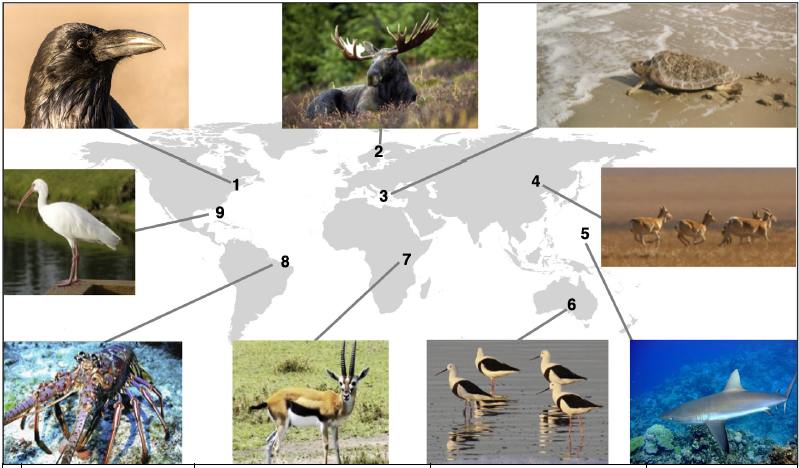 In a new review paper out in Trends in Ecology & Evolution, lab member Claire Teitelbaum and co-author Thomas Mueller outline the patterns and ecology of nomadic animal movements. Nomads move in irregular patterns in both space and time, covering large areas but in a pattern that is non-seasonal and often unpredictable. These irregular movements are generally driven by resources that change unpredictably – but can also be associated with escaping from natural disasters and from parasites or predators. Nomadic movements can also take many different forms, from full-time nomads that move frequently over their entire lives to seasonal nomads like white ibis, which move nomadically during some parts of the year but not others, to irruptive nomads like locusts. The review also addresses the consequences of nomadic movements for populations, communities, and ecosystems. These ecological effects vary widely depending on the type of nomadic behavior; for instance, gene flow can both increase and decrease as a consequence of these irregular movements. Overall, nomads often shape the ecosystems in which they live, whether that is through disturbance or seed dispersal, so we conclude by arguing that – though challenging – conservation of this behavior is important for maintaining ecological functions.
In a new review paper out in Trends in Ecology & Evolution, lab member Claire Teitelbaum and co-author Thomas Mueller outline the patterns and ecology of nomadic animal movements. Nomads move in irregular patterns in both space and time, covering large areas but in a pattern that is non-seasonal and often unpredictable. These irregular movements are generally driven by resources that change unpredictably – but can also be associated with escaping from natural disasters and from parasites or predators. Nomadic movements can also take many different forms, from full-time nomads that move frequently over their entire lives to seasonal nomads like white ibis, which move nomadically during some parts of the year but not others, to irruptive nomads like locusts. The review also addresses the consequences of nomadic movements for populations, communities, and ecosystems. These ecological effects vary widely depending on the type of nomadic behavior; for instance, gene flow can both increase and decrease as a consequence of these irregular movements. Overall, nomads often shape the ecosystems in which they live, whether that is through disturbance or seed dispersal, so we conclude by arguing that – though challenging – conservation of this behavior is important for maintaining ecological functions.